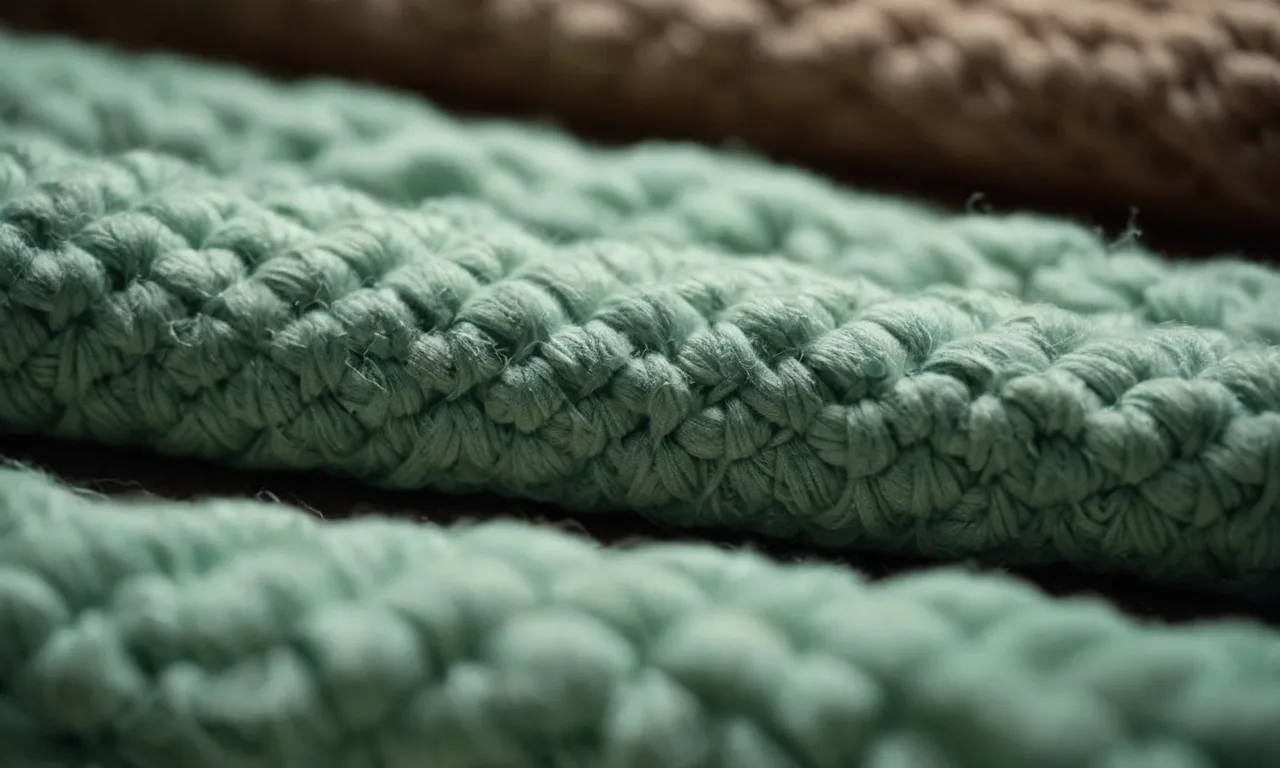Cotton Blend Meaning: A Comprehensive Guide
Clothing labels often feature terms like ‘cotton blend’ or ‘cotton mix,’ but what do they really mean? If you’re curious about the composition of your favorite garments and want to make informed choices, this article is for you.
If you’re short on time, here’s a quick answer to your question: A cotton blend is a fabric made by combining cotton fibers with other natural or synthetic fibers, such as polyester, rayon, or spandex.
The blend aims to combine the desirable properties of different fibers, creating a fabric that is more durable, wrinkle-resistant, or stretchy than pure cotton.
In this comprehensive guide, we’ll dive deep into the world of cotton blends, exploring their composition, benefits, and drawbacks. We’ll also discuss how to care for cotton blend fabrics and provide tips for choosing the right blend for your needs.
What is a Cotton Blend?
Cotton blends have become increasingly popular in the textile industry, offering a unique combination of comfort, durability, and versatility. But what exactly is a cotton blend? Let’s delve into this fascinating topic.
Definition of Cotton Blend
A cotton blend is a fabric that combines cotton fibers with one or more other types of natural or synthetic fibers, such as polyester, rayon, or spandex. By blending cotton with these fibers, manufacturers can create fabrics that possess desirable characteristics from each material, resulting in a textile that boasts the best qualities of both components.
Cotton blends offer a harmonious balance of breathability, strength, and stretch, making them versatile choices for various apparel and home textile applications.
Common Fiber Blends with Cotton
- Cotton/Polyester: One of the most prevalent blends, combining the natural softness of cotton with the durability and wrinkle-resistance of polyester. This blend is widely used in casual wear, sheets, and towels.
- Cotton/Rayon: Rayon adds a silky touch and drape to cotton, resulting in a lightweight and breathable fabric often used in summer clothing and linings.
- Cotton/Spandex: The addition of spandex (or elastane) to cotton provides stretch and recovery, making the blend ideal for activewear, denim, and form-fitting garments.
- Cotton/Linen: A luxurious blend that combines the softness of cotton with the crisp, cool feel of linen, often used in upscale apparel and home textiles.
Reasons for Blending Cotton
There are several compelling reasons why manufacturers choose to blend cotton with other fibers:
- Improved Durability: Blending cotton with synthetic fibers like polyester can enhance the fabric’s resistance to abrasion, pilling, and fading, prolonging its lifespan.
- Better Moisture Management: Some blends, such as cotton/polyester, can wick moisture away from the skin more effectively, making them ideal for activewear and athletic apparel.
- Wrinkle Resistance: Fabrics like cotton/polyester blends are less prone to wrinkling, reducing the need for frequent ironing or pressing.
- Cost Savings: Blending cotton with less expensive fibers can result in cost savings for manufacturers and consumers alike.
According to Statista, global cotton production in 2022/23 is estimated to reach 26.44 million metric tons, with India, China, and the United States being the top producers. This high demand for cotton highlights the importance of exploring innovative blends to meet various textile needs. 😊
Whether you’re seeking comfort, performance, or style, cotton blends offer a versatile solution that combines the best of both worlds. By understanding the different types of blends and their unique properties, you can make informed choices when selecting fabrics for your next project or wardrobe addition.
👏
Benefits of Cotton Blends
Improved Durability
Cotton blends offer superior durability compared to pure cotton fabrics. By combining cotton with synthetic fibers like polyester or nylon, the resulting fabric becomes more resistant to wear and tear, extending its lifespan.
According to Textile Insight, cotton-polyester blends can withstand up to 3 times more abrasion than 100% cotton fabrics. This makes cotton blends an excellent choice for activewear, workwear, and clothing that undergoes frequent washing and heavy use.
Wrinkle Resistance
One of the most significant advantages of cotton blends is their wrinkle-resistant properties. Synthetic fibers like polyester or rayon added to cotton help the fabric retain its shape and minimize wrinkling, making it a great option for travel or professional attire.
This benefit not only saves time and effort on ironing but also keeps your clothes looking crisp and well-maintained for longer.
Stretch and Comfort
Cotton blends offer an excellent balance of stretch and comfort. The addition of stretchy fibers like spandex or elastane to cotton creates a fabric that moves with your body, providing flexibility and ease of movement.
This makes cotton blends perfect for active lifestyles, sportswear, and even casual wear. At the same time, the cotton component ensures breathability and softness against the skin, ensuring you stay comfortable all day long. 😊
Moisture Wicking
Many cotton blends incorporate moisture-wicking fibers like polyester or nylon, which help draw sweat away from the body, keeping you dry and comfortable during physical activities or hot weather. This feature is particularly beneficial for athletes, fitness enthusiasts, and anyone living in humid climates.
According to Cotton Incorporated, cotton blends with moisture-wicking properties can enhance performance and prevent discomfort caused by excessive sweating.
Easy Care
Cotton blends are generally easier to care for than pure cotton fabrics. They are often machine-washable, quick-drying, and less prone to shrinking or fading. This low-maintenance quality makes cotton blends a practical choice for busy lifestyles, families with children, or anyone seeking fuss-free clothing options. Additionally, many cotton blends are wrinkle-resistant, reducing the need for ironing and ensuring a fresh, neat appearance straight from the dryer.
Drawbacks of Cotton Blends
Reduced Breathability
While cotton blends offer several benefits, they come with a notable drawback: reduced breathability. 😥 Unlike pure cotton fabrics, which are highly breathable and allow air to circulate freely, cotton blends tend to trap more heat and moisture against the skin.
This can lead to discomfort, especially in warm or humid climates. 👎
According to Cotton Incorporated, a leading authority on cotton, “Cotton blends can reduce the breathability of the fabric, leading to a less comfortable wear experience.” This is because synthetic fibers like polyester or nylon, which are commonly blended with cotton, have a lower air permeability compared to natural fibers.
🤔
Potential Allergic Reactions
While cotton itself is a hypoallergenic fiber, the synthetic materials used in cotton blends can sometimes trigger allergic reactions in sensitive individuals. For example, polyester, a popular blending component, has been known to cause skin irritation, rashes, and even respiratory issues in some people. 😷
According to a study published in the Journal of Occupational Health, approximately 2-7% of the general population may experience allergic reactions to synthetic fibers like polyester. This percentage can be even higher in individuals with pre-existing skin conditions or sensitivities. 😮
Environmental Concerns
While cotton is a natural and renewable resource, the production of synthetic fibers used in cotton blends can have a significant environmental impact. Many synthetic fibers are derived from non-renewable petroleum-based sources, contributing to the depletion of fossil fuels and greenhouse gas emissions.
🌍☁️
Furthermore, the manufacturing processes involved in producing synthetic fibers can generate harmful byproducts and waste, potentially polluting air, water, and soil. According to EPA statistics, textiles make up a staggering 16% of municipal solid waste in the United States, with a significant portion being synthetic fibers.
😲
While cotton blends offer some benefits, it’s crucial to be aware of their potential drawbacks, such as reduced breathability, allergic reactions, and environmental concerns. By considering these factors, consumers can make informed decisions and choose fabrics that align with their personal preferences and values.
👍
Caring for Cotton Blend Fabrics
Ah, cotton blends – the versatile and comfortable fabrics that have become a staple in our wardrobes. But with great wearability comes great responsibility – caring for these fabrics properly to ensure their longevity and maintain their vibrant colors and soft texture.
Fear not, dear reader, for we’ve got you covered with a comprehensive guide on how to keep your cotton blends looking and feeling their best!
Washing Instructions
- Always check the care label for specific instructions. Different cotton blends may have varying washing requirements.
- As a general rule, wash cotton blends in cool or warm water. Hot water can cause shrinkage and fading.
- Use a mild detergent and avoid bleach or fabric softeners, which can break down the fibers over time.
- Separate colors from whites to prevent color transfer, and wash new items separately for the first few washes to prevent bleeding.
Drying Tips
When it comes to drying your cotton blends, you have a few options:
- Air drying is the gentlest method and can help prevent shrinkage. Simply lay the garment flat or hang it to dry.
- If you must use a dryer, choose a low or delicate heat setting. According to The Spruce, high heat can cause cotton blends to shrink or become misshapen.
- Remove items from the dryer promptly to minimize wrinkling.
Ironing and Steaming
Cotton blends can be ironed or steamed, but it’s important to use the right settings:
- Check the care label for recommended heat settings. Cotton blends with synthetic fibers may require a lower temperature.
- Use a pressing cloth or turn the garment inside out to prevent shine or scorch marks.
- Steaming can be a gentler alternative to ironing, as it helps smooth out wrinkles without direct heat.
Storing Cotton Blends
Proper storage is key to keeping your cotton blends in tip-top shape:
- Fold or hang items neatly to prevent creasing and wrinkles.
- Store in a cool, dry place away from direct sunlight, which can cause fading.
- Use breathable garment bags or storage containers to protect against dust and moisture.
By following these simple tips, you can ensure your cotton blend garments remain as fresh and fabulous as the day you bought them. Isn’t it amazing how a little TLC can go a long way? 😊 So, let’s raise a glass (or a cotton blend shirt) to keeping our favorite fabrics in top-notch condition!
Choosing the Right Cotton Blend
Considering Your Needs
When it comes to selecting the perfect cotton blend fabric, it’s all about understanding your unique needs and preferences. Are you seeking something lightweight and breathable for summer wear, or do you need a sturdy, durable option for everyday use?
Perhaps you’re on the hunt for a cozy, insulating blend to keep you warm during those chilly winter months. 🧤 Identifying your priorities is the first step in navigating the vast world of cotton blends.
Don’t forget to consider factors like moisture-wicking capabilities, wrinkle resistance, and ease of care. If you’re an active individual who loves hitting the gym or going for long hikes, a cotton-polyester blend might be your perfect match, offering both comfort and functionality.
On the other hand, if you’re a busy professional who values a polished, wrinkle-free appearance, a cotton-spandex blend could be the way to go. 👔
Popular Cotton Blend Fabrics
The fabric universe is brimming with an array of cotton blends, each offering its own unique characteristics. Here are some popular options to explore:
- Cotton-Polyester Blends: A versatile choice that combines the breathability of cotton with the durability and wrinkle-resistance of polyester. These blends are often found in activewear, casual wear, and even dress shirts.
According to Statista, the global production of cotton-polyester blended fabrics reached an impressive 12.6 million metric tons in 2021.
- Cotton-Spandex Blends: Offering a perfect balance of comfort and stretch, these blends are a favorite for form-fitting garments like leggings, yoga pants, and even denim. The addition of spandex provides a touch of elasticity, ensuring a flattering fit and freedom of movement.
- Cotton-Rayon Blends: Rayon is a semi-synthetic fiber derived from wood pulp, and when blended with cotton, it creates a soft, silky fabric that drapes beautifully. These blends are often used in dresses, blouses, and lightweight summer clothing.
Reading Fabric Labels
Navigating the world of cotton blends can be a breeze when you know how to decipher those fabric labels. Manufacturers are required to list the fiber content percentages, so you can easily identify the blend composition.
For example, a label that reads “60% cotton, 40% polyester” tells you exactly what you’re dealing with. 👀
Don’t be afraid to do a quick online search or consult a trusted resource like Cotton Incorporated if you’re unsure about a particular blend. Their website offers a wealth of information on different cotton blends and their properties, helping you make an informed decision.
Remember, taking the time to understand fabric labels can save you from potential disappointments and ensure you end up with a garment that meets your expectations. 🎉
Conclusion
Cotton blends have become a staple in the fashion industry, offering a versatile and practical solution for various clothing needs. By combining the natural softness and breathability of cotton with the durability and performance of other fibers, these blends provide a unique balance of comfort and functionality.
Whether you’re looking for wrinkle-resistant dress shirts, stretchy activewear, or moisture-wicking t-shirts, there’s a cotton blend out there to suit your preferences. By understanding the composition, benefits, and care requirements of these fabrics, you can make informed choices and extend the lifespan of your favorite garments.
Remember to always read fabric labels carefully and follow the recommended care instructions to ensure your cotton blend clothing looks and feels its best for years to come.








